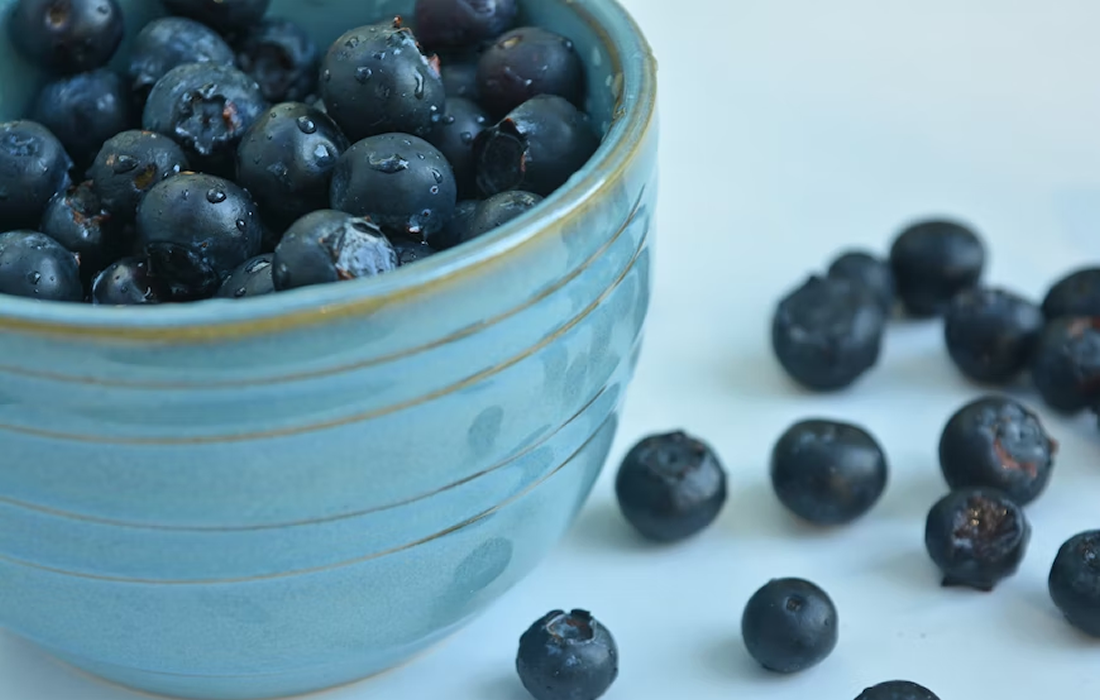Nutrition and Supplements
Anthocyanins as Promising Molecules Affecting Inflammation and Gut Microbiota in Type 2 Diabetes
According to the CDC, over 37 million Americans—about 1 in 10 individuals—have diabetes, and approximately 90-95% of them have type 2 diabetes.
Normally, a hormone called insulin moves glucose (sugar) from the blood into cells, where it’s used for energy. But in type 2 diabetes, the body doesn’t use or produce insulin properly, and glucose builds up in the blood instead of being used by cells.
If diabetes is not managed properly, it can cause many health problems over time, including cardiovascular disease, high blood pressure, nerve damage, eye damage and vision loss, kidney disease and foot problems.
While various factors can increase the risk of developing type 2 diabetes, including a family history of diabetes, research has shown that a diet rich in fruits and vegetables can delay or prevent the onset of diabetes and enhance the well-being of individuals with diabetes-related health problems.
The benefits associated with fruits and vegetables are attributed to their high concentrations of polyphenols. One particular class of polyphenols—anthocyanins—are responsible for giving red-orange to blue-violet colors in plants.
Studies in the United States and Finland have shown that consumption of anthocyanin-rich foods, particularly berries, reduces the risk of type 2 diabetes.
A new review article published in the Journal of Agricultural and Food Chemistry summarizes the effects of anthocyanins on the gut microbiome, energy metabolism and inflammation, with a special focus on acylated anthocyanins.
Researchers have studied the effects of various anthocyanins on bacteria living in the gut (or gut microbiome) using animal models.
Anthocyanins are divided into 2 categories based on their molecular structure: acylated and nonacylated.
Acylated anthocyanins have a chemical group called an “acyl group” (made up of a carbon atom and an oxygen atom double-bonded to each other, with a single bond to another carbon atom), which nonacylated anthocyanins lack.
Compared to nonacylated anthocyanins, acylated anthocyanins are more stable and more resistant to digestion. For this reason, they are not digested and absorbed in the stomach, and upper intestine, and they pass through to the colon, where they are degraded extensively by gut microorganisms.
Elderberry, blackberry, and blackcurrant mainly contain nonacylated anthocyanins, while acylated anthocyanins are found in red radish, purple corn, black carrot, red cabbage and purple sweet potato.
Studies on the two types of anthocyanins differ in design and analysis methods, making it difficult to draw clear conclusions about the differences in biological activity.
In a mouse study, nonacylated anthocyanins from black rice increased the abundance of certain gut bacteria, including Akkermansia muciniphila. A. muciniphila has been shown to stimulate insulin secretion and lead to improved glucose metabolism in mice with type 2 diabetes.
Acylated anthocyanins from various sources, such as purple sweet potato and Concord grape, have also been shown to affect the gut microbiome by promoting the growth of beneficial bacteria, inhibiting the growth of harmful bacteria, and increasing the production of short-chain fatty acids, which are beneficial for gut health and glycemic control.
Dr. Wallace told MNT that the majority of studies to date are not sufficiently sophisticated or validated “to really know what happens to anthocyanins in the GI tract.”
“Purified radio labeled non-acylated and acylated anthocyanins should be administered in humans to really know if there is a difference (this has not been done to my knowledge as it is very expensive),” he said.
Although it is challenging to draw clear conclusions about the differences in biological activity between the two types of anthocyanins due to differences in study design and analysis methods across studies, Dr. Yang and coauthors conclude that acylated anthocyanins may have more potential benefits in regulating energy metabolism, inflammation, and gut microbiota in type 2 diabetes compared to nonacylated anthocyanins.
Other researchers, however, believe that it is too early to reach definitive conclusions.
“I’m not aware of any studies that directly compare purified acylated and non-acylated anthocyanins. I see this paper as ‘hypothesis generating,’ which would be published to justify a [g]rant to study this exact question. At this point I don’t think there is enough evidence to make any firm conclusions or public health statements,” said Dr. Wallace.
In their review of current research, Dr. Baoru Yang, professor of food sciences at the University of Turku, and her coauthors also acknowledge that “the gut microbiota-modulating effect of acylated anthocyanins deserves further study in different models as well as different physiological and pathological conditions.”
Sources:
Anthocyanins as Promising Molecules Affecting Energy Homeostasis, Inflammation, and Gut Microbiota in Type 2 Diabetes with Special Reference to Impact of Acylation. Kang Chen, Maaria Katariina Kortesniemi, Kaisa Marjut Linderborg, and Baoru Yang
Journal of Agricultural and Food Chemistry 2023 71 (2), 1002-1017
DOI: 10.1021/acs.jafc.2c05879.
Black rice anthocyanins alleviate hyperlipidemia, liver steatosis and insulin resistance by regulating lipid metabolism and gut microbiota in obese mice. Haizhao Song, Xinchun Shen, Yang Zhoua and Xiaodong Zheng. Food Funct., 2021,12, 10160-10170. DOI: https://doi.org/10.1039/D1FO01394G
By Clarissa Brincat on February 28, 2023. Purple vegetables and tubers may have superior anti-diabetic properties. MedicalNewsToday. Retrieved February 28, 2023 from https://www.medicalnewstoday.com/articles/purple-vegetables-and-tubers-may-have-superior-anti-diabetic-properties.
Image from:Christina Deravedisian on Unsplash.

